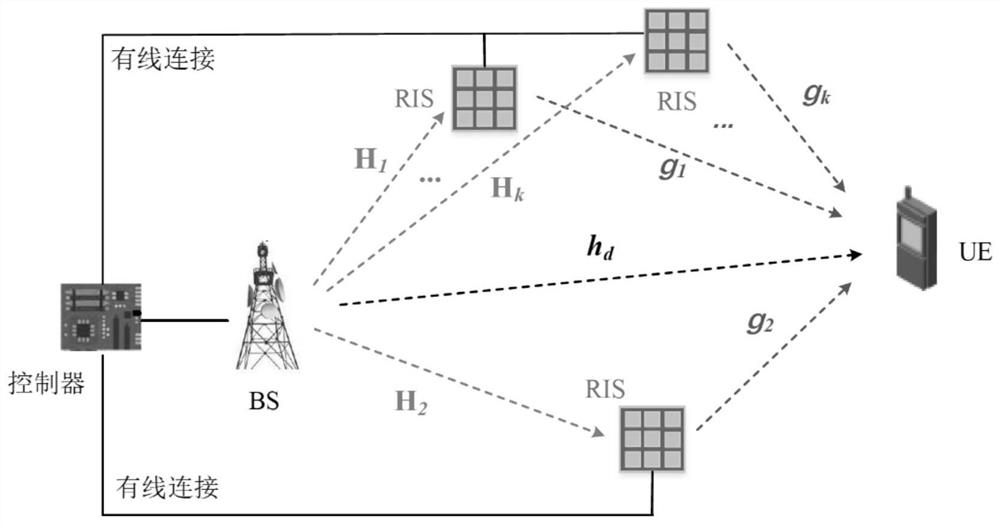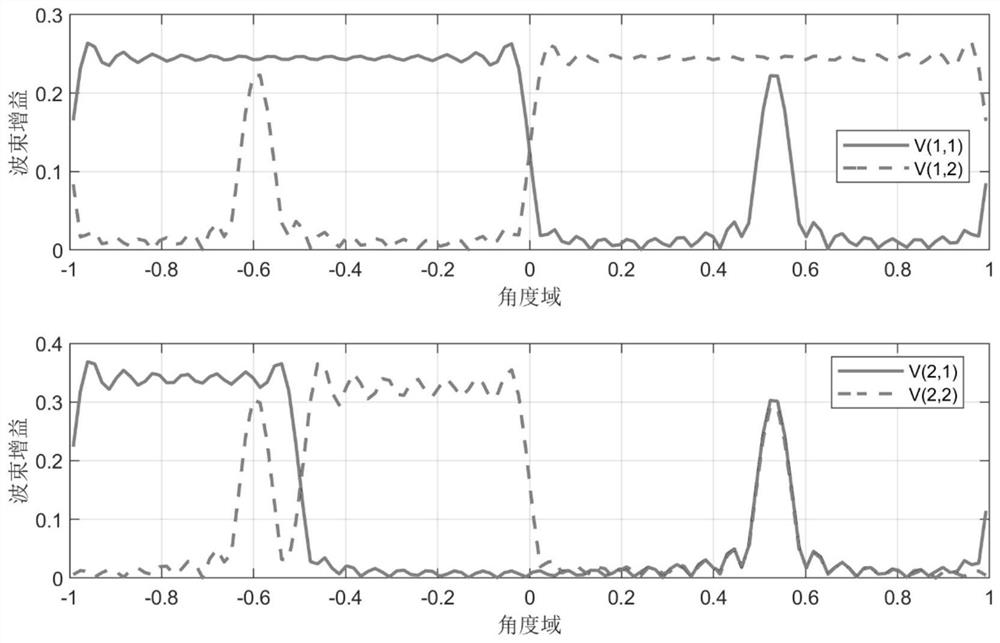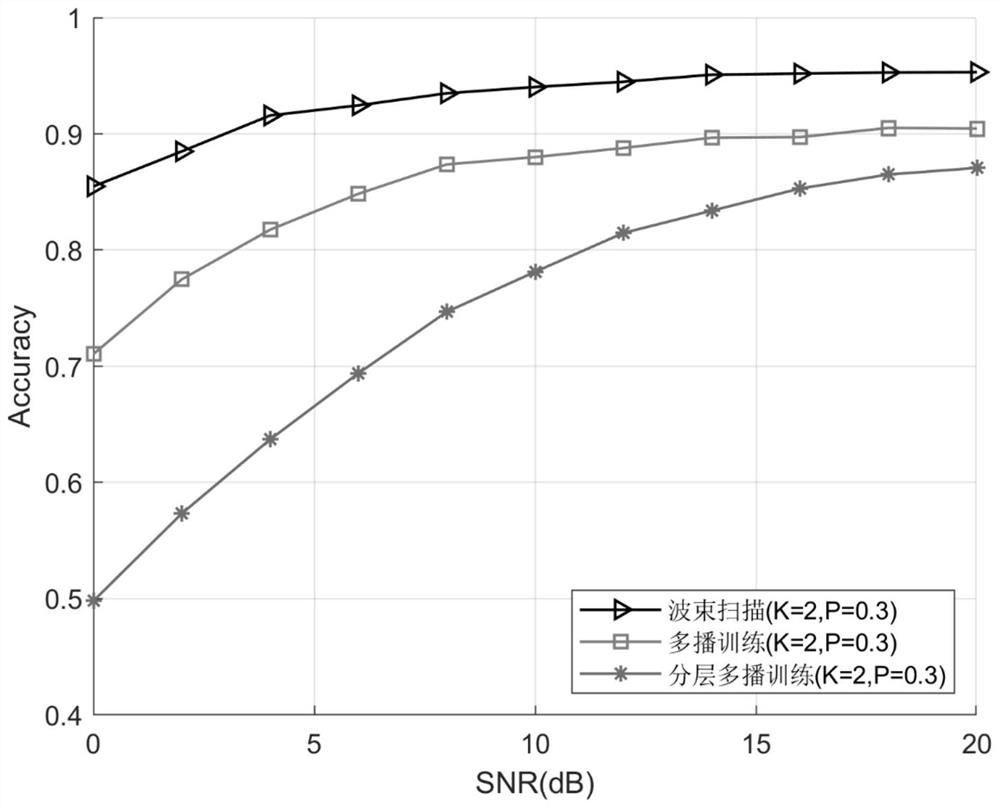Beam training method in millimeter wave system assisted by intelligent reflection surface
A beam training and reflective surface technology, applied in the field of beam training, can solve the problem of rare application of beam training, and achieve the effect of reducing training overhead, low complexity, and ensuring communication quality
- Summary
- Abstract
- Description
- Claims
- Application Information
AI Technical Summary
Problems solved by technology
Method used
Image
Examples
specific Embodiment approach 1
[0133] (1) if figure 1 As shown, the RIS-assisted millimeter wave system model and channel model considered in the present invention are as follows:
[0134] (1.1) The present invention considers a downlink RIS-assisted millimeter-wave system, including a base station BS, a single-antenna user-end UE, an intelligent controller for controlling reflection coefficient, and K blocks of RIS for assisting communication. Both the BS end and each RIS end use a uniform linear array with an element interval of half a wavelength. The number of BS antennas is N BS , the number of reflection units of each RIS is N R . The BS and each RIS are wired to the intelligent controller, so that the BS can control the reflection coefficient of each RIS in real time. Due to the serious path loss in the millimeter wave communication system, the signals reflected twice or more by the RIS are ignored.
[0135] (1.2) Using the Saleh-Valenzuela narrowband channel model, the channel between the BS and...
specific Embodiment approach 2
[0187] For the problem established in step (2.5), in order to improve the efficiency of beam training, the present invention proposes a multicast training scheme that can simultaneously perform beam scanning on multiple paths, as follows:
[0188] (3.1) In the communication system, it is usually considered that the positions of RIS and BS are fixed, so it is assumed that the channel angle of each RIS relative to the BS is known, that is A known. The index of the codeword at the BS that can achieve beam alignment with the k-th block RIS satisfy
[0189]
[0190] Among them, assuming that the number of RIS is limited and uniformly distributed in the space, different from each other.
[0191] (3.2) Divide beam training into N BS cycle. In the i-th period, the codeword to be trained at the BS is f(i).
[0192] (3.3) Judging whether f(i) is consistent with Adjacent, the beamforming vector at the BS end in the i-th period is obtained.
[0193] When f(i) is not with ...
specific Embodiment approach 3
[0212] For the problem established in step (2.5), in order to further improve the efficiency of beam training on the basis of the second specific embodiment, the present invention proposes a layered multicast training scheme, which can perform layered beam training on multiple paths at the same time, as follows Said:
[0213] (3.1) Obtain the codeword index corresponding to the beam that can be aligned with the k-th block RIS at the BS In the communication system, it is usually considered that the positions of RIS and BS are fixed, so it is assumed that the channel angle of each RIS relative to the BS is known, that is A known. The index of the codeword at the BS that can achieve beam alignment with the k-th block RIS satisfy
[0214]
[0215] Among them, assuming that the number of RIS is limited and uniformly distributed in the space, different from each other.
[0216] (3.2) Design BS-side layered codebook and RIS-side layered codebook for layered multicast trai...
PUM
 Login to View More
Login to View More Abstract
Description
Claims
Application Information
 Login to View More
Login to View More - R&D
- Intellectual Property
- Life Sciences
- Materials
- Tech Scout
- Unparalleled Data Quality
- Higher Quality Content
- 60% Fewer Hallucinations
Browse by: Latest US Patents, China's latest patents, Technical Efficacy Thesaurus, Application Domain, Technology Topic, Popular Technical Reports.
© 2025 PatSnap. All rights reserved.Legal|Privacy policy|Modern Slavery Act Transparency Statement|Sitemap|About US| Contact US: help@patsnap.com



